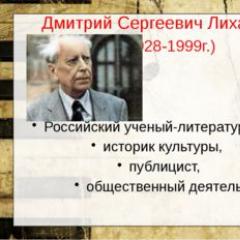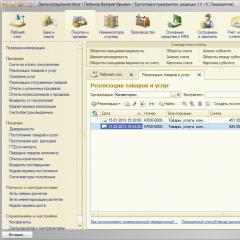Is there such a position as a manager? List of typical positions (Job descriptions)
ECSD 2018. Revision dated April 9, 2018 (including those with changes that entered into force on July 1, 2018)
To search for approved professional standards of the Ministry of Labor of the Russian Federation, use directory of professional standards
Garage Manager
Job responsibilities. Ensures that vehicles are maintained in proper condition. Organizes the release of rolling stock onto the line according to the approved schedule in technically sound condition. Monitors compliance by drivers with the rules of technical operation of vehicles and provides them with the necessary technical assistance on the line. Develops and implements measures aimed at eliminating downtime and premature returns of vehicles from the line due to technical faults. Analyzes the causes of traffic accidents and violations of traffic rules by drivers. Ensures ongoing repairs of industrial buildings, structures and garage equipment, safe and healthy working conditions, as well as timely provision of benefits to workers regarding working conditions. Develops and implements measures for landscaping the garage, landscaping and cleaning the surrounding area. Monitors the provision of fuel and lubricants, timely maintenance and proper storage of rolling stock. Takes measures for the selection and placement of personnel and their appropriate use. Ensures that employees comply with labor safety rules and regulations, production and labor discipline, and internal labor regulations. Presents proposals to reward distinguished employees, impose disciplinary sanctions on violators of production and labor discipline, and apply material sanctions, if necessary.
Must know: decrees, orders, orders, other governing and regulatory documents of higher authorities relating to the production and economic activities of motor transport enterprises, the Charter of motor transport, structure, purpose, design features, technical and operational data and rules for the technical operation of motor vehicles, technology and organization of maintenance and repair of rolling stock, basic economics, organization of labor and production, current regulations on wages and forms of material incentives for road transport workers, procedures for maintaining records and drawing up established reports, rules for operating computer equipment, traffic rules, labor legislation, internal labor regulations , rules and regulations of labor protection.
Qualification requirements. Higher professional education and work experience in the specialty for at least 3 years or secondary vocational education and work experience in the specialty for at least 5 years.
Vacancies for the position of Garage Manager according to the all-Russian vacancy database
In reporting on the labor of enterprises and organizations of individual sectors of the sphere of material production (industry, construction, transport, state farms and some other production sectors), the number of workers is divided into two groups: workers and employees. From the group of employees, the following categories are distinguished: managers, specialists and other employees classified as employees.
ConsultantPlus: note.
By Decree of the State Standard of the Russian Federation dated December 26, 1994 N 367, the All-Russian Classifier of Worker Professions, Employee Positions and Tariff Grades OK 016-94 was put into effect on January 1, 1996.
When distributing workers by personnel categories in statistical reporting on labor, one should be guided by the All-Union Classifier of Worker Occupations, Employee Positions and Tariff Grades (OKPDTR), approved by the USSR State Standard 08.27.86 N 016.
OKPDTR consists of two sections:
classifier of workers' professions;
classifier of employee positions, which contains positions of managers, specialists and employees.
33. Workers include persons directly involved in the process of creating wealth, as well as those engaged in repairs, moving goods, transporting passengers, providing material services, etc. In OKPDTR, the professions of workers are listed in section 1.
Workers, in particular, include persons employed:
33.1. management, regulation and supervision of the operation of automatic machines, automatic lines, automatic devices, as well as direct management or maintenance of machines, mechanisms, units and installations, if the labor of these workers is paid at tariff rates or monthly salaries of workers;
33.2. production of material assets by hand, as well as with the help of simple mechanisms, devices, tools;
33.3. construction and repair of buildings, structures, installation and repair of equipment, repair of vehicles;
33.4. moving, loading or unloading raw materials, materials, finished products;
33.5. at work on receiving, storing and sending goods in warehouses, bases, storerooms and other storage facilities;
33.6. care of machines, equipment, maintenance of production and non-production premises;
33.7. sinking of surface and underground mine workings, drilling, testing, sampling and development of wells, geological surveying, prospecting and other types of geological exploration work, if their labor is paid at tariff rates or monthly salaries of workers;
33.8. machinists, drivers, stokers, switch post attendants, track and artificial structure linemen, loaders, conductors, workers repairing and maintaining transport lines, communication lines, repairing and maintaining equipment and vehicles, tractor drivers, mechanics, crop and livestock workers ;
33.9. postmen, telephone operators, telegraph operators, radio operators, telecom operators;
33.10. operators of computers and electronic computers;
33.11. janitors, cleaners, couriers, cloakroom attendants, watchmen.
34. Managers include employees holding positions of heads of enterprises and their structural divisions. The position in OKPDTR, which has a category code of 1, refers to managers.
Leaders, in particular, include:
directors (general directors), chiefs, managers, managers, chairmen, commanders, commissars, foremen, work performers at enterprises, structural units and divisions;
chief specialists: chief accountant, chief dispatcher, chief engineer, chief mechanic, chief metallurgist, chief welder, chief agronomist, chief geologist, chief electrician, chief economist, chief researcher, chief editor;
List of typical positions (Job descriptions)
Top company managers
1.1 General Director
1.2 Executive Director
1.3 CFO
1.4 Commercial Director
1.5 HR Director
1.6 Marketing Director
1.7 Logistics Director
1.8 Quality Director
1.9 Operations director of a retail network
1.10 Branch director
1.11 Technical Director
Administrative staff
2.1 Office manager
2.3 Head of Legal Department
2.5 Dispatcher
2.6 Secretary to the General Director
2.7 Department Secretary
2.8 Secretary-receptionist
Research and development and information technology personnel
3.1 Chief designer
3.2 Head of Laboratory
3.3 Constructor
3.4 Laboratory assistant
3.5 Head of IT Department
3.6 System administrator
3.7 Senior programmer
3.8 Programmer
Logistics and purchasing staff
4.1 Logistics and procurement personnel
4.1.1. Head of product department
4.1.2. Director of logistics Department
4.1.3. Head of Procurement
4.1.4. Logistics Manager
4.1.5. Purchasing Manager
4.1.6. Head of the customs group
4.1.7. Foreign trade specialist 4.2 Warehouse logistics personnel
4.2.1 Warehouse manager
4.2.2 Deputy warehouse manager
4.2.3 Storekeeper
4.2.4 Loader-picker
4.2.5 Loader
4.2.6 Forklift driver 4.3 Transport logistics personnel
4.3.1 Head of the motor transport department
4.3.2 Delivery driver for heavy vehicles
4.3.3 Forwarding driver for passenger cars
4.3.4 Heavy vehicle driver
4.3.5 Car driver
4.3.6 Forwarder
5.2 Marketing Manager
5.4 Merchandiser
5.5 Promoter
5.6 Designer
5.7 Copywriter
5.8 Layout designer
Customer service staff
6.1 Restaurant/cafe director
6.3 Bartender-cashier
6.4 Wardrobekeeper
6.5 Waiter
6.6 Maid
6.7 Concierge
6.8 Head waiter
6.9 Receptionist
6.10 Doorman
6.11 Ironer
6.12 Service Manager
6.13 Tailor
Development staff
7.1 Development Director
7.2 Development Manager
7.3 Project Manager
7.4 Project Manager
HR staff
8.1 Head of Personnel Department
8.2 HR Manager
8.3 Training Manager
8.3 HR Manager
Finance and accounting staff
9.1 Head of Planning and Economic Department
9.2 Chief accountant
9.3 Deputy Chief Accountant
9.4 Senior accountant
9.5 Accountant
9.6 Store accountant
9.7 Warehouse accountant
9.8 Financial manager
9.9 Economist
9.10 Labor economist
9.11 Accounts receivable specialist
9.12 Senior cashier
9.13 Cashier
Corporate Sales Personnel
10.1 Head of Sales Department
10.2 City Sales Manager
10.3 Regional Sales Manager
10.4 Key account manager
10.5 Sales representative
10.6 Sales Administrator
Retail sales staff
11.1 Supermarket director
11.2 Store director
11.3 Deputy Store Director
11.4 Head of department (food products)
11.5 Head of department (non-food products)
11.6 Sales area administrator (food products)
11.7 Sales area administrator (non-food products)
11.8 Senior Seller (Food Products)
11.9 Senior salesperson (non-food products)
11.10 Seller (food products)
11.11 Seller (non-food products)
11.12 Salesperson-cashier (food products)
11.13 Salesperson-cashier (non-food products)
11.13. Cashier-operator
11.15. Transceiver
Production personnel (management)
12.1 Production Manager
12.2 Chief engineer
12.3 Chief technologist
12.4 Chief mechanic
12.5 Chief power engineer
12.6 Workshop manager
12.7 Head of the section
12.8 Production Planning Manager
Technical personnel (food production)
13.1 Chef
13.3 Confectioner
13.4 Marker
13.5 Baker
13.6 Meat cutter
13.7 Packer
13.8 Food production worker
Technical personnel (non-food production)
14.1 Foreman
14.2 Production foreman
14.3 Technologist
14.4 Engineer
14.5 Quality controller
14.6 Master
14.7 Mechanic
14.8 Process equipment operator
14.9 Serviceman
14.10 Carpenter
14.11 Locksmith
14.12 Turner
14.13 Milling operator
14.14 Electrician
14.15 Electric and gas welder
14.16 Non-food production worker
14.17 Construction equipment operator
14.18 Car mechanic
14.19 Installer
14.20 Auto electrician
14.21 Safety engineer
14.22 Refrigeration unit operator
Support staff
15.1 Head of Security
15.2 Head of Administrative Operations
15.3 Security Officer
15.4 Driver-bodyguard
15.5 Controller (security guard)
15.6 Controller on the sales floor
15.7 Health worker
15.8 Castellan
15.9 Porter
15.10 Janitor
15.11 Courier
15.12 Cleaner
Engineering and technical personnel
16.1 Head of Standardization and Control Department
16.2 Standardization specialist
16.3 Head of customer service
16.4 Head of the design and technical department
16.5 Slinger
16.6 Head of the environmental department
16.7 Ecologist
16.8 Chief surveyor
Team management depends on the quality and professionalism of management. Managerial tools are used by individuals called or bosses. It’s worth distinguishing between these concepts or putting an equal sign between them, let’s try to figure it out.
Sources give different interpretations (formulations) of these two concepts. The observable unity of opinions is as follows.
A boss is a person appointed to a managerial position, vested with administrative power and receiving remuneration for his work. determined by law and the regulations of the enterprise. Other persons (staff employees) are subordinate to him.
He has the following responsibilities:
- to give orders,
- manage the process (for example, labor)
- be responsible for entrusted subordinates
For the boss, personal characteristics and constant improvement of acquired skills are important.
A leader is, as a rule, a person’s profession, a status provided by a formal position and informal positions. Status is determined depending on responsibilities, rights, conditions. The manager may perform, for example, the following duties:
- chairman of the board
- president
However, responsibilities to achieve results are performed both for reward and informally.
The concept of the head of an organization as an employee is defined by the Labor Code (Article 273). According to it, this is an individual who manages an organization.
The manager has the following responsibilities:
- manage, organize the work of the assigned group
- make strategic decisions
- create conditions for the development of the company
- participate in maintaining documentation, distributing budget funds
- represent the team at a higher social level
The work of a manager is regulated by the norms of both labor and civil law. Contacts with colleagues, exchange of experience, business meetings - all this is the responsibility of the manager. He must have managerial abilities, developed intelligence, efficiency, and discipline.
From the history
Acting as a leader is considered an ancient profession. The leaders were considered leaders. Previously, they managed not only the labor process, but also various areas of the daily life of their subordinates.
Modern managers are in charge of employees of specific work collectives (organizations). The profession is in demand in the labor market. The head of a company department acts simultaneously as a superior and a subordinate.
Information from the explanatory dictionary of D.N. Ushakova
A boss in the dictionary is defined as an official, in charge, in charge of something. And a leader is like a person in charge of something, a mentor.
Common Traits of a Boss and a Leader
Many sources call these two words synonyms. The line between them is thin and easily erased. The main thing is that both of them are officials participating in the management of a team, a sphere, an industry. In addition, in addition to educational and management skills, they must have the following features:

- creative mind (creativity)
- flexible mind
- ability to respond quickly (in critical situations)
- ability to set goals and lead a team towards them
- compliance with moral principles, humanity
- leadership qualities, ability to lead a group
Both the boss and the manager benefit if they stay positive.
For both, the following factors are unacceptable:
- incompetence, rudeness
- optionality, lack of order
- desire for personal advantage
- lack of personal growth
Correct self-esteem and the absence of excessive ambition and authoritarianism are important for everyone.
Differences in the implementation of rights and responsibilities
Despite the frequent identification of concepts, there are several points of difference.
Boss:
- This is a position.
- Performs duties for a fee.
- without participating in management functions.
- Employed under a contract approved by order.
- He draws up his own requirements in the form of orders (instructions, instructions).
Supervisor:
- This is a profession.
- Performs duties for compensation and informally.
- Management function is required.
- Can also work on a voluntary basis (charitable project, children's association).
- Requirements can be expressed in the form of consultations, proposals, .
Involves working with people. Despite all the differences, the boss and manager for successful work are called upon to earn respect in the team and improve their professional characteristics.
An effective leadership style also directly depends on the use of positive personal qualities in practical activities.
Write your question in the form below
Job responsibilities. Ensures that vehicles are maintained in proper condition. Organizes the release of rolling stock onto the line according to the approved schedule in technically sound condition. Monitors compliance by drivers with the rules of technical operation of vehicles and provides them with the necessary technical assistance on the line. Develops and implements measures aimed at eliminating downtime and premature returns of vehicles from the line due to technical faults. Analyzes the causes of traffic accidents and violations of traffic rules by drivers. Ensures ongoing repairs of industrial buildings, structures and garage equipment, safe and healthy working conditions, as well as timely provision of benefits to workers regarding working conditions. Develops and implements measures for landscaping the garage, landscaping and cleaning the surrounding area. Monitors the provision of fuel and lubricants, timely maintenance and proper storage of rolling stock. Takes measures for the selection and placement of personnel and their appropriate use. Ensures that employees comply with labor safety rules and regulations, production and labor discipline, and internal labor regulations. Presents proposals to reward distinguished employees, impose disciplinary sanctions on violators of production and labor discipline, and apply material sanctions, if necessary.
Must know: resolutions, orders, orders, other governing and regulatory documents of higher authorities relating to the production and economic activities of motor transport enterprises, the Charter of motor transport; device, purpose, design features, technical and operational data and rules for the technical operation of vehicles; technology and organization of maintenance and repair of rolling stock; fundamentals of economics, organization of labor and production; current regulations on wages and forms of material incentives for road transport workers; the procedure for maintaining records and drawing up established reports; rules for operating computer equipment; Traffic Laws; labor legislation; internal labor regulations; rules and regulations of labor protection.
Qualification requirements. Higher professional education and work experience in the specialty for at least 3 years or secondary vocational education and work experience in the specialty for at least 5 years.


